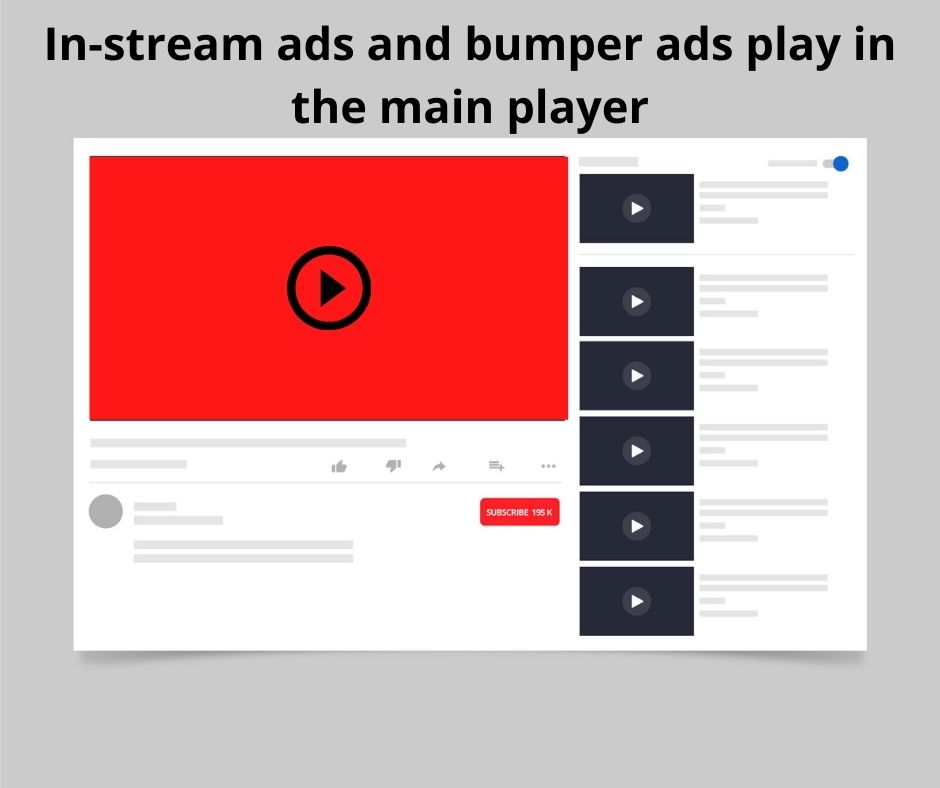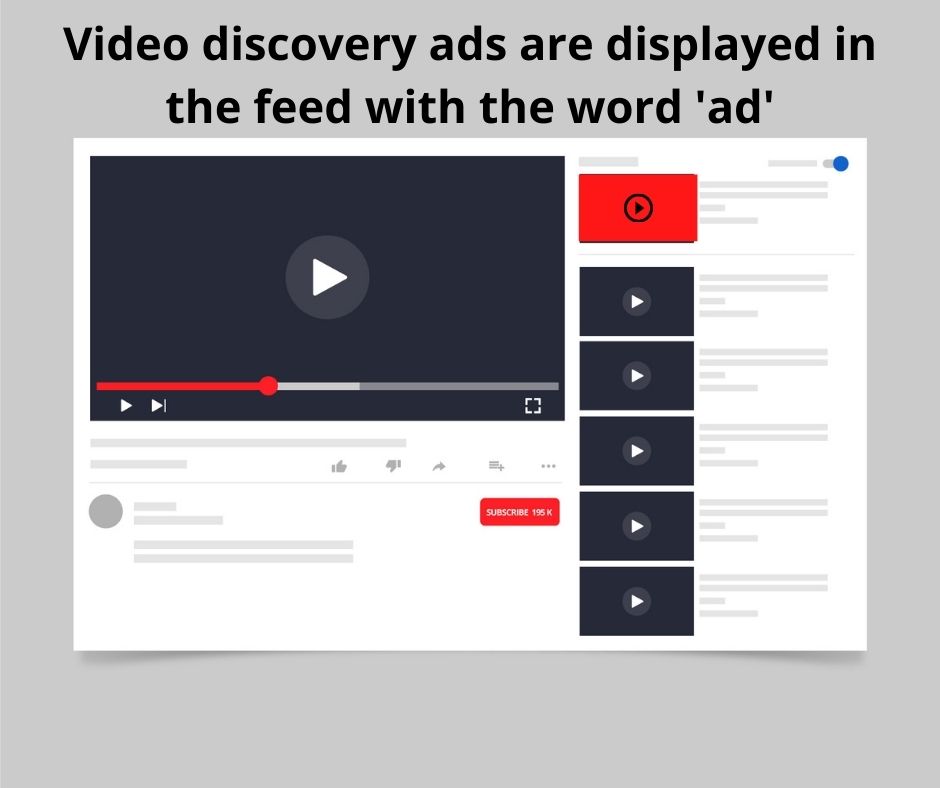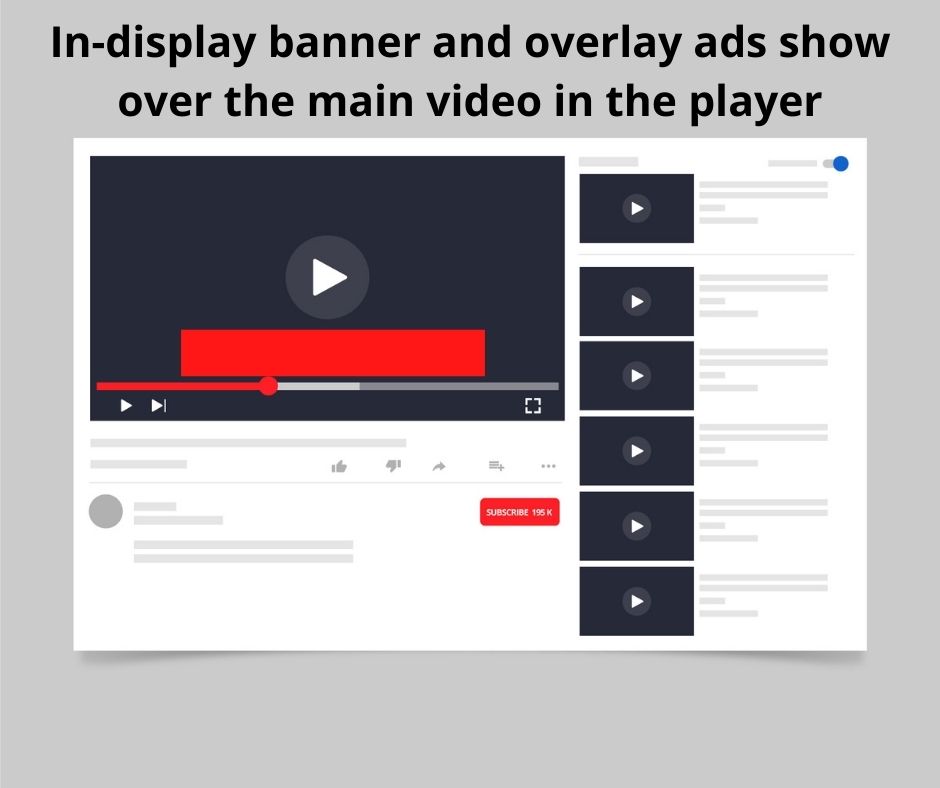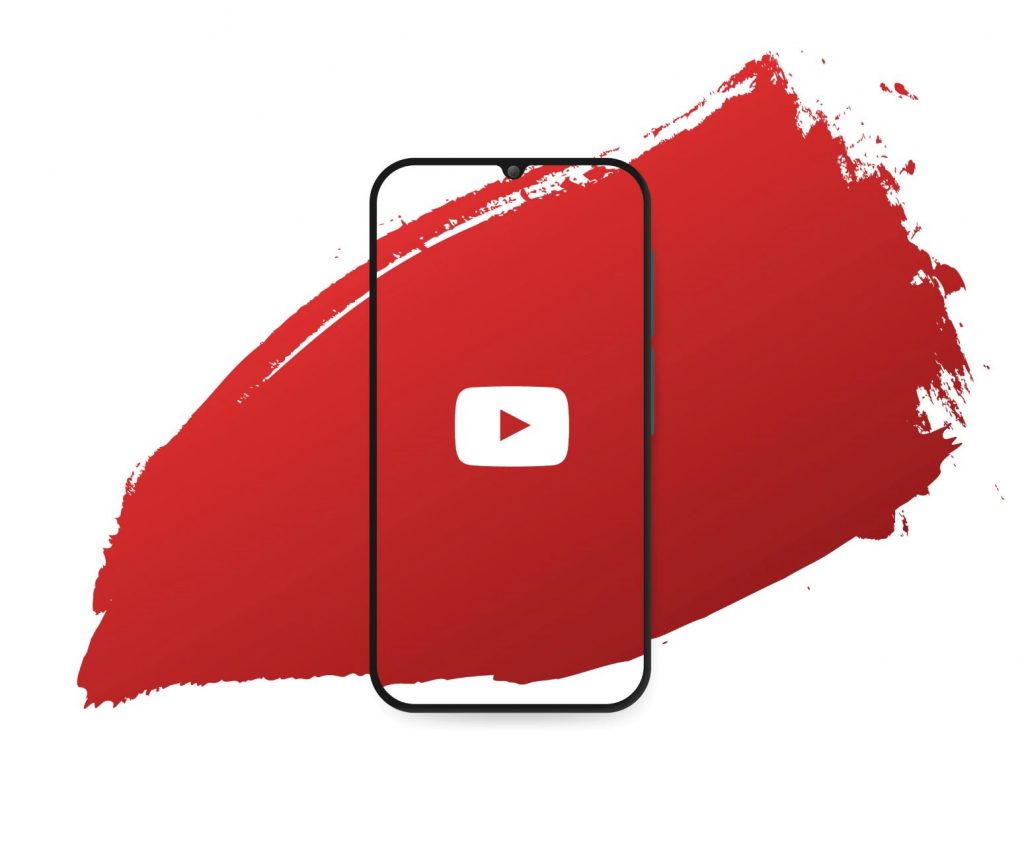It’s the second most visited site on the internet and the biggest video platform by far; with 2 billion signed in monthly visitors and around 5 billion daily views. If you’re thinking of getting started with business marketing on YouTube then you’ve made a good decision.
But before you start creating your video masterpieces, it’s worth looking at a few ways to create a bit of a strategy for your YouTube ads. After all, making video can be time consuming and expensive (although it doesn’t have to be).
YouTube has really upped the amount of ads that play in-stream, with many reporting that YouTube ads are annoying and intrusive. But, that’s not to understate their effectiveness, with around 40% of people claiming to have had a purchase influenced by an ad from YouTube and 90% of people finding new brands via YouTube ads. (source)
So yes, ads on YouTube can be super effective. But you need to be making something that’s going to get people’s attention in a very short time scale.
YouTube Video Ad Formats
There are a number of different ad formats which offer different levels of engagement and pricing. Not all of them need to be video.
In-stream ads

- Skippable in-stream ads: Between 6 seconds to 12 minutes, these ads can play at the beginning, end, or during a YouTube video and can be skipped after 5 seconds.
- Non-skippable in-stream ads: Typically 15 seconds or less, these videos cannot be skipped and can play before, after or during the main video.
- Bumper ads: These short (6 seconds or less) in-stream ads cannot be skipped and are typically played before or during a main video.
Sponsored posts

- Video discovery ads: Promoted videos that are shown at the top of search results within YouTube, on Google or ad partners.
- Outstream ads: Ads placed on mobile advertising partners which auto-play with the sound off.
- Masthead ads: High value and high visibility ad, typically used by enterprise or corporate accounts. Displayed at the top of the YouTube home page on desktop, or on the main screen for YouTube for TV.
Display ads

- In-display ads: Banner ads displayed on YouTube desktop, usually above the search results.
- Overlay ads: Display ads that show over the top of the video, normally as a banner in the bottom third of the screen.
As you can see there is a lot of choice, with a variety of pluses and minuses. We’re going to focus on the video ads in this post.
YouTube also refers to TrueView video ads, which isn’t mentioned as an option on their ad formats page. TrueView is actually all about how the customer engages with the ad, and how you pay.
So, for example, a marketer using a TrueView in-stream video ad would only pay for the impression if a customer watches up to 30 seconds of their ad (or the entire duration if shorter than 30 seconds).
Or, if using TrueView Discovery, you only pay when someone clicks to watch your video.
How much does it cost for video ad views on YouTube?
When it comes to prices for YouTube ads, your bids are usually based on CPM (cost per thousand views), although some are based on a per-click basis, such as discovery ads.
For CPM you’ll be paying something in the region of $0.010 to $0.030 for a single view of your video. Yes, you’re paying just a few cents to have your YouTube ad seen by your target demographic, which is, at first glance, a bit of a bargain.
However, as you’re usually charged by the thousand views (CPM), and there can be many thousands of views a day, this can quickly add up.
In fact, one report suggests that to target around 100,000 views you’ll pay in the region of $2,000.
Like with all other programmatic advertising options, YouTube does allow you to set your daily budget, so you don’t need to worry about breaking the bank.
Creating An Effective Video Ad
Whatever video format you choose, you’ve got around 5 seconds to catch people’s attention. So whatever you do, you definitely need to cut to the chase. Even if your ad is longer, those first five seconds are key as getting people to watch your ad or to click through to your site is the end goal.
Think about the TV ads that work for you. Light hearted, eye catching and the sort of thing that you don’t want to skip immediately.
This playlist of the best examples of 5-6 second video ads (bumper ads) gives you an idea about how effectively many brands can get their message across.
As you’ll see from many of these, there is a spot of humour, very little in the way of words and often a striking or memorable image.
One thing to bear in mind is that you’re probably going to display your ad multiple times to the same audience, so you most likely won’t get that click right away. But, with the right ad, you can build familiarity and even inquisitiveness, and make people want to click next time they see it. It can be a long term strategy rather than the instant traffic hit you get from search engine results.
Video ad production
The great thing about our modern digital world is that you don’t need a whole film crew to create an ad for YouTube. A simple text and image based ad can easily be created using mobile editing apps, with a snappy tune or your choice of voiceover.
You’ll also find plenty of ad agencies online who can help you create a snappy YouTube ad for whatever your budget. In fact, YouTube suggests local and global agencies and recommends software on it’s pages to help you make a great YouTube video ad. And you can always find someone on Fiverr to put together a super simple ad on a budget.
If you want to make a DIY video, there is nothing stopping you using just a smartphone and desktop tripod to capture you at your desk. Remember there is a lot to bear in mind with video ads though, including sound quality, lighting, good editing and, last but definitely not least, your script.
Choosing the Right Ad Campaign For Your Business
Most YouTube ad campaigns will allow you to target video watchers on both YouTube itself, and on publishing partners. This means that your video ad can appear on an external website, which can really amp up your video impressions.
To create any video ads for YouTube campaigns, you’ll need to login to your Google Ads dashboard. From here, you can choose your sales goals and enter all the details such as your budget and targeting.
The type of ad campaign you choose will reflect your business goals of course. These are the same as for display or text ads:
- Sales
- Leads
- Site visitors/traffic
- Product/brand consideration
- Brand awareness and reach
You may have several YouTube ads targeting different stages of your sales funnel at the same time, just as you would with any other ad campaign.
Now, I could list all the options, but YouTube actually have a very useful guide right here.
But, here’s a TL;DR:
Building awareness/ad recall
- TrueView for reach
- Bumper ads
- Non-skippable 15-20 sec ads
- Outstream ads
- Masthead ads
Growing interest
- TrueView in-stream
- TrueView discovery
Driving action
- TrueView for action
- Universal app campaign for video
When creating your video ad campaigns, you’ll be able to customise based on your budget, demographic targeting and add extras such as CTAs to your video ads.
The Pros and Cons of YouTube Ads
The benefits
One of the best things about advertising on YouTube is the huge reach of the platform. YouTube is the second biggest search platform after Google, even though it is owned by the big G.
It also has excellent potential to target very broad demographics, with everyone from under 18s to over 50s watching videos on YouTube every day.
And, with those cost effective impressions, you can really spread the word in a visually engaging manner for a fraction of buying a TV advertising spot.
The negatives
Many feel that ads on YouTube are intrusive and annoying, even if they’re well targeted. Yes, they are there to help video creators to monetise their content. And YouTube does offer a premium package for those who want to skip those ads. But there is definitely a case for the fact that YouTube has hit a saturation point with some of the in-stream promotions.
Another problem is the prevalence of click fraud and ad fraud on YouTube. In fact, it’s been found that even though video advertising accounted for 45% of digital marketing ad spend in 2018, it was responsible for 64% of ad fraud.
And the problem hasn’t gone away either. In 2020 we’ve seen a huge growth in malware and click fraud targeting video inventory, with around $35 billion thought to have been lost to click fraud this year.
Although this fraud normally happens with ads hosted on spoofed or low quality publisher inventory, it can also happen thanks to automated traffic on the platform itself.
So although video ads on YouTube are a very effective way to get your brand message out there, precautions still need to be taken to prevent fraudsters running away with your ad spend. The best way to prevent fake impressions on your video ads making off with your ad budget? Get ClickCease – check it out with a free trial.
Read our free report exploring the state of click fraud in 2020
